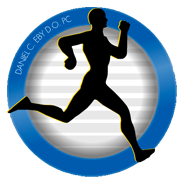Shoulder Impingement
There can be a number of reasons contributing to the pain in your shoulder. There are three bones, four tendons, four muscles, and many other soft tissues that contribute to our shoulder joint.
When one or more of these structures are improperly aligned, they can press and injure other structures. Inflammatory conditions such as tendinitis, bursitis, or arthritis can be involved with shoulder impingement. Progression of the shoulder impingement can lead to further injury such as rotator cuff tears.
Oftentimes, the rotator cuff becomes inflamed from overuse or damage from a bone spur. The fluid-filled cushion called a bursa becomes inflamed. As the space narrows, the rotator cuff will be damaged causing irritation and pain when you raise your arm.

Risk Factors
- Trauma or injury to the shoulder, upper arm or neck
- Overuse or repetitive activities such as throwing a ball or using a hammer
Symptoms
- Shoulder pain, especially with overhead lifting
- Tenderness around the shoulder
- Pain and weakness with raising your arm
Imaging and Diagnosis
X-rays of your shoulder can show signs of impingement. Although without treatment, your symptoms are likely to worsen. If they do, an MRI may be necessary.
Treatment
If you are diagnosed with shoulder impingement, our staff will over several options to treat your symptoms. Recommended therapies may include, anti-inflammatory medications such as ibuprofen, ice to the affected shoulder, modifying your activity at home and/or work and physical therapy. A cortisone injection can effectively treat the underlying inflammatory conditions contributing to your symptoms. These therapies can decrease your pain and prevent further progression of the disorder.
If these conservative treatments do not help to decrease your symptoms, we may recommend an MRI to assess the damage in your shoulder. Depending on these results, Dr. Eby and staff will recommend the appropriate treatment option.
Some related articles include:
- Rotator Cuff Tear
- AC Joint Arthritis
- GH Joint Arthritis
- Labral Tears
- Biceps Tendonitis
McMahon, Patrick J., and Harry B. Skinner. Current Diagnosis & Treatment in Orthopedics. 6th ed., McGraw-Hill Medical, 2021.
Jennifer, Rynders, and Sara D Hart. Orthopaedics for Physician Assistants. 1st ed., Elsevier – Health Science, 2013.
